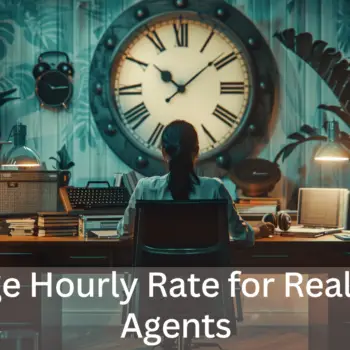According to the National Association of Realtors, 60,000 real estate professionals have left the industry. The cause for the exit? A portion of these agents decided to explore other ventures or choose to hang their licenses. They opted to deactivate their licenses.
But the second group was not so favored. This group was axed out of the industry.
Both these groups have something in common: an inactive real estate license.
What is an inactive real estate license? It is a license that is no longer permitted to operate in the industry. This could be a result of an agent’s personal choice or a disciplinary action. The point is, an inactive real estate license equals an inactive real estate practice.
This guide will shed light on what it means to have an inactive license and how it impacts your career in real estate. By understanding these nuances, you’ll be better equipped to navigate your path in this field. So, let’s unravel the mystery behind an inactive real estate license.
What Is an Inactive Real Estate License

An inactive real estate license is a standing that denotes an agent’s temporary or prolonged pause from practicing real estate. This status was created to accommodate various circumstances, such as agents needing to take a break or as corrective action for agents who deliberately ignore licensing regulations.
Here is a quick example: Most licensing bodies will send real estate licenses into inactive status when agents fail to renew their licenses.
For a better understanding, let’s compare it with its counterpart: an active license. An active license signifies that the holder is fully qualified and permitted by the relevant authority to engage in real estate activities like buying and selling properties and earning commissions.
On the contrary, someone with an inactive license cannot legally participate in these activities until they reactivate their license.
Having an inactive license is a mixed bag. For instance, while it allows agents benefits like flexibility when they can’t complete CE requirements, it also limits them from performing any revenue-generating tasks related to property transactions, which could impact their financial stability.
Different Routes to License Inactivation

Two routes lead to license deactivation, and not every path is a yellow brick road.
Voluntary Inactivation
Voluntary inactivation is a license deactivation process real estate agents start willingly. This could be due to various personal or professional reasons.
Importantly, going inactive voluntarily through formal channels doesn’t carry penalties and can be reversed per state policy rules. It’s an opportunity to pause your practice without facing negative consequences.
Involuntary Inactivation
Involuntary inactivation happens without choice. It results from licensing boards deactivating your license for failure to meet regulations. Reasons might include not completing Continuing Education courses for license renewals, ignoring fee schedules, or violating codes of conduct repeatedly.
Let’s consider the California Department of Real Estate. The DRE will place an unrenewed license into inactive status for up to two years.
Unlike voluntary inactivation, this process is accompanied by repercussions. The ramifications are typically fines and penalties that vary depending on the severity of non-compliance.
How to Maintain Your Inactive License
Requirements and fees for maintaining an inactive real estate license vary by state. While real estate transactions are prohibited in inactive status, some jurisdictions still mandate license holders to continue satisfying certain credential upkeep obligations.
For example, the Arkansas Real Estate Commission still requires inactive agents to pay the yearly standard license renewal fee. But you won’t need to complete the CE requirements.
A Temporary Surrender
Every once in a while, we all need a break. But never assume an inactive status without double-checking precise jurisdictional guidelines. Stay informed and proactive, so that when you are ready to resume, you don’t have to play catch up.
Next Steps:
1. Research: Research your state’s laws on maintaining an inactive real estate license.
2. Plan: Consider how an inactive status might impact your financial stability and plan accordingly.
3. Consult: Seek advice from experienced colleagues or mentors who have navigated this process before.
We hope this guide has shed some light on inactive real estate licenses. If you’ve ever had experience with having an inactive license, voluntary or otherwise, we’d love to hear about it in the comments below!
If these insights were helpful, please share them with your network.












